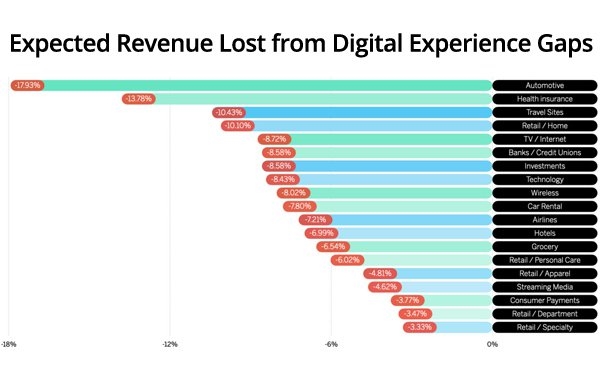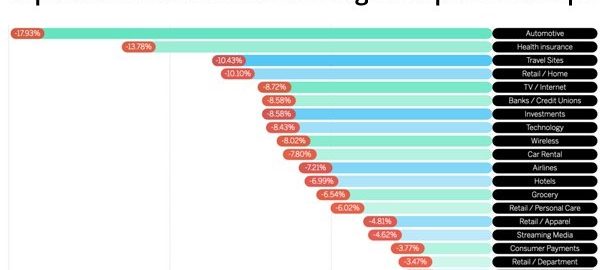Revenue Lost By Poor Digital Experience Can Now Be Measured

Tracking the performance and qualifying the financial impact of a customer’s digital experience typically requires the ability to analyze data and benchmark it to compare to others in the industry. Developers at Qualtrics XM believe they have developed a process to tie that experience to the company’s bottom line.
The company on Thursday released a framework called Digital Experience Metrics (DX Metrics), which allows companies to use the data to quantify the financial impact of their digital experiences and benchmark their scores against industry peers.
DX Metrics, built into Qualtrics CustomerXM, includes “scientifically validated questions that measure three key aspects of any digital experience,” the company explains in a release on its website.
Those three aspects include emotion, measured by customer satisfaction; effort, measured by how easy or difficult it was to complete a task; and success, measured by the completion of the task.
Qualtrics research shows increasing a customer’s satisfaction score can increase their spending by up to 37%. Reducing the effort required to complete a task online can lead to a 23% increase in the amount they spend.
Qualtrics XM Institute conducted digital customer research in the fourth quarter of 2019, 2020 and 2021. The 50,000 respondents, U.S. residents age 18 and older, were selected from a randomized panel and asked to rate certain website experiences that had taken place in the last 30 days with 150 companies in 15 commerce-focused industries.
In the 2021 Q4 benchmark study, the respondents selected “make a purchase” as their primary or secondary purpose for visiting the site and analysis from that study was used to create the financial impact metrics.
The retail industry was found to outpace others at a loss of 3.33%, while automotive, healthcare and hospitality had the most room for improvement. The average expected revenue lost from digital channels, sorted by industry, could be recovered by improving the digital experience with things like better user experience and personalized content and customer journeys, according to the data.
The average expected revenue lost from automotive digital channels was 17.93% — the highest amount — followed by health insurance at 13.78%, travel sites at 10.43%, and retail and home at 10.10%. Beyond that, the amount of lost revenue lost dropped. The average expected revenue lost by TV and internet came in at 8.72%, followed by banks and credit unions at 8.58%, and technology at 8.53%.
(48)
Report Post







